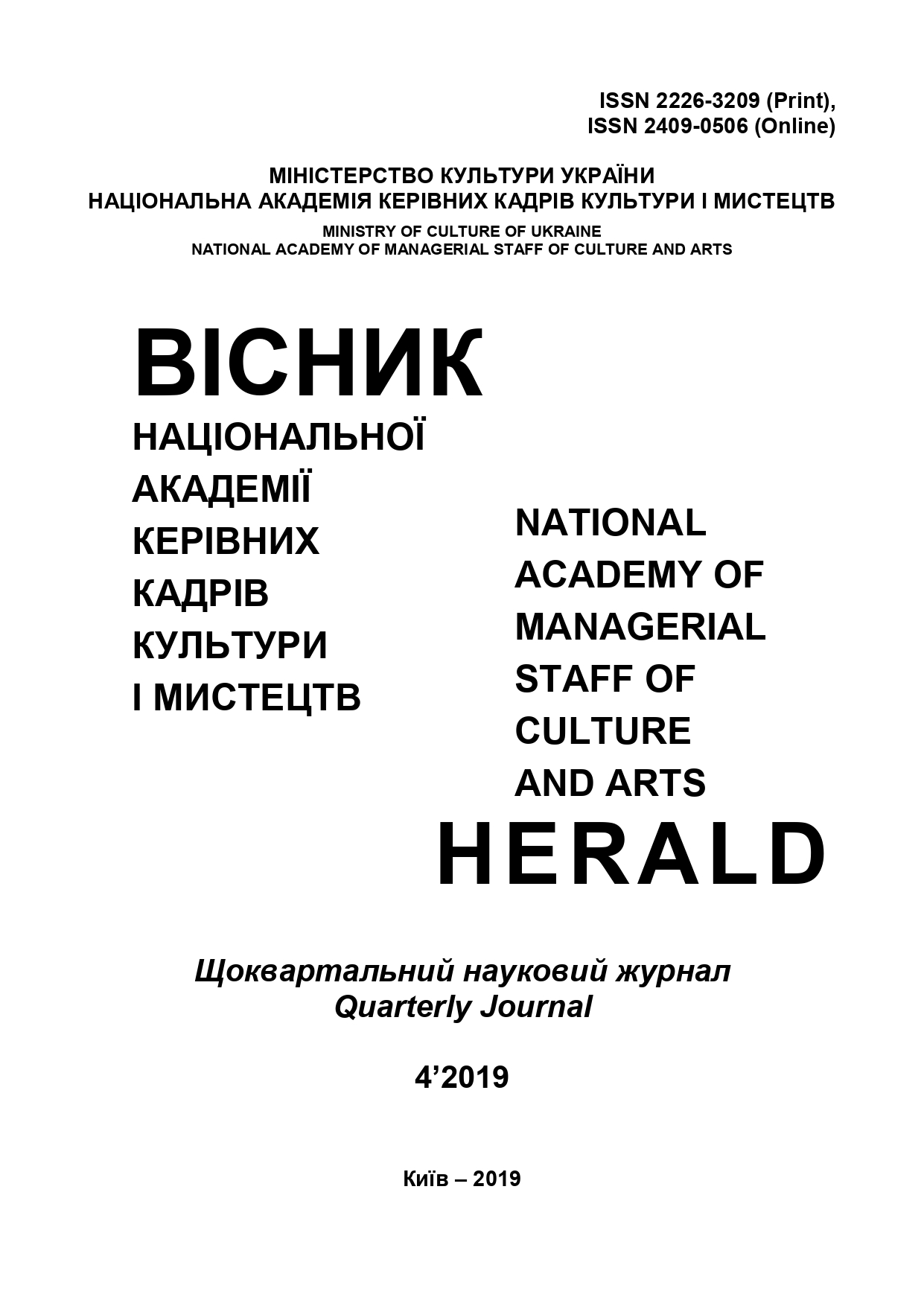Mythology of aesthetics: assembly of antiques musts and laws of neuroesthetics
Mythology of aesthetics: assembly of antiques musts and laws of neuroesthetics
Author(s): Victor Karpov, Natalia Igorivna SyrotynskaSubject(s): Fine Arts / Performing Arts, Aesthetics, Ancient World, Sociology of Culture
Published by: Національна академія керівних кадрів культури і мистецтв
Keywords: primitive instincts; aesthetics; mythology; muses of antiquity; neuroesthetics; neuro art;
Summary/Abstract: The purpose of the article is to identify relationships between different periods based on the functioning of various types of ancient arts and aesthetic senses that are defined by the laws of neuroesthetics. Methodology. The choice of research strategies in the study of the dynamics of changes in the socio-cultural structure determined the use of systematic and integrated approaches, as well as a comparative method of research. We also use the prognostic aspect of the study, which involves building new value models and symbols that reflect the mechanisms of cultural and artistic development of humankind. The use of these research methods contributed to obtaining their theoretical results. The scientific novelty of the research lies in the formulation and development of an actual topic, which in the scientific dimension has not received comprehensive and objective coverage and is being studied for the first time. The idea is justified, which is the understanding of the relationship of the laws of neuro art and ancient mythology to serve a more profound knowledge of the nature of aesthetic sensations. Conclusions. This type of creativity is characterized by the metaphors of language, as well as other arts that are related to the text. This form of creativity excites the imagination that in the most delicate strokes reflects a wide range of emotions, feelings, or events that brings pleasure at the time of perception of the subtleties of expression. Parallel rows of neuroesthetic laws and mythological Muses allow us to learn the relationship of the underlying mechanisms of aesthetic perception, which open up new meanings of human evolution. Such Parallels define the critical role of art in mastering its potential and identify the aesthetic experience as an essential factor of self-knowledge and human development.
Journal: Вісник Національної академії керівних кадрів культури і мистецтв
- Issue Year: 2019
- Issue No: 4
- Page Range: 42-46
- Page Count: 5
- Language: English

